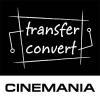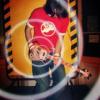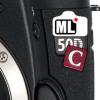Leaderboard
Popular Content
Showing content with the highest reputation on 06/17/2013 in all areas
-
The EOSHD 5D Mark III Raw Shooter's Guide - available now!
Andrew Reid and one other reacted to andy lee for a topic
Nice one Andrew - Just bought your RAW guide and downloaded it , I'm going to sit down and read it all tonight. it looks very comprehensive at first glance - you have been busy!!! I bought your other 2 guides last year they where great too! Everyone on this Forum shuld support Andrew and buy this guide NOW ! he has done so much to push the ML RAW to the masses - Im sure the EOSHD readership and membership has increased alot this past month because he was one of the first to use the ML RAW and share his info with the world!!2 points -

The EOSHD 5D Mark III Raw Shooter's Guide - available now!
Planetsea reacted to Andrew Reid for a topic
Dispelling the myths - optimising performance - never read another endless forum post again! [wp_eStore_buy_now:product_id:3:end] Payment via PayPal, just $19.99 (usual price $29.99) My third book launches today. It is available to download immediately and for the first week you can get 33% off the usual price making it just $19.99. It is an enormous 12 chapters and 106 pages. Read the full article here1 point -
The EOSHD 5D Mark III Raw Shooter's Guide - available now!
Brellivids reacted to FilmMan for a topic
A person could literally waste days researching information on the net. For $20, it is handed to you on a silver platter. A lot of time and effort goes into putting together what EOSHD dude, Andrew, put together. Embrace. My 2 cents. Cheers.1 point -
I had the pleasure of testing the new Sigma 18-35mm f/1.8 DC HSM Art (on a Canon 100D...). Focussed on photography, but the results are amazing. Even at f/1.8 it is really sharp, I'm sure it will even beat many primes. It's pretty crazy actually! [url=http://www.eoshd.com/comments/gallery/image/527-sigma-18-35mm-f18-18/][/URL] [url=http://www.eoshd.com/comments/gallery/image/528-sigma-18-35mm-f18-18/][/URL] [url=http://www.eoshd.com/comments/gallery/image/529-sigma-18-35mm-f18-18/][/URL] Here you can find 78 sample pictures for download in full resolution. In the first slideshow everything is at f/1.8! http://www.digifotopro.nl/content/exclusief-%E2%80%93-testfotos-sigma-18-35mm-f-18-dc-hsm-art I did a very small video test, wanted to see if it's parfocal. I think it is! http://www.youtube.com/watch?v=-agLVS4MP_c This will be killer on Blackmagic EF-mount camera's (if it will work?), Canon aps-c with raw... MFT with speed booster, if a electronic EOS version ever arrives... Pricing of the 18-35mm is TBA...1 point
-

The EOSHD 5D Mark III Raw Shooter's Guide - available now!
nahua reacted to Andrew Reid for a topic
Thanks Jim. That is the idea really - a one stop. It is getting harder and harder to read the spider web of forum and search engine info. The stuff in the book is my own hands-on research. I sat for like 2000 hours solid in front of software and cameras to make the guide and the $19.99 goes towards the 99% of what EOSHD outputs on the blog - which is FREE. Cheers1 point -

The EOSHD 5D Mark III Raw Shooter's Guide - available now!
andy lee reacted to Andrew Reid for a topic
Cheers Andy hope you have a good reading session!!1 point -

The EOSHD 5D Mark III Raw Shooter's Guide - available now!
Andrew Reid reacted to Ivar Kristjan Ivarsson for a topic
Wow, you are a genius Andrew. I'm a long time lurker first time poster today. Can't wait to read your guide, thinking of getting a Mark III soon, currently own a Gh2 :) Thanks for all the good info, your site is one of my favorites. Cheers from Iceland :)1 point -
The Diopter Thread.
JohnBarlow reacted to Bioskop.Inc for a topic
Smoking that Cigar! Single & no Acrobats in sight, but i do spot a swing in the distance...1 point -
Just bought it as well! Question: As the 5D3 raw landscape inevitably changes as we move forward (we are still in the early stages of its development), will those of us who have already bought this first edition have access to future new editions without having to pay again?1 point
-

The Diopter Thread.
Tito Ferradans reacted to JohnBarlow for a topic
Arrived in todays post! and its 1.6D according to my measurement Bioskop gets the cigar!1 point -
Kinefinity KineRaw S35 Hands-on Review
peederj reacted to Dan Hudgins for a topic
I forgot to mention a couple of things that are not quite clear from the review. The KineRAW cameras have two operational modes, simple and "pro". I was not a fan of that, but that is the way they set it up. In "Pro" mode some of the buttons change their meaning and allow you to make more adjustments. One of the "Pro" modes is the ability to change BOTH the headroom T/ stops above 90% white subject, and the ISO so you get a set of ISO values for each headroom value, the head room can range from zero T/ stops up to about the same as in a Cineon film scan. Under controlled lighting you can get by with only 1 to 3 stops of head room, so by increasing the analog gain on ALL three colors the noise can be lower than just increasing the ISO by the monitoring curve. In otherwords, if you select the ISO 160 monitoring curve and then apply 4x green analog gain with the red and blue analog gain scaled automatically to match so the white balance tracks, you get 160x4=640, so its like 640 ISO but with less noise and headroom. The monitoring curves go from 80 to 2560, those give maximum head room for each ISO, you can then adjust the analog gain mutiplyer from 1x to 64x and get a range of EI ISO from each of the 1/3 stop spaced monitoring curves, giving a range of 80 to 5120 for very flat lighting and lower noise, to 2560 to 163840 with maximum head room but more noise. If you take the 160 monitoring curve and apply 16x analog gain mutiplier you get 2560, which may look better than using the 2560 monitoring curve under very flat lighting, but the 2560 monitoring curve would look better in a forest with broken sun since you get much more headroom although the mid-tone calibrated EI ISO is about the same for 18% gray subject exposure. Likewise you can get EI ISO 1280 with various headrooms, 80x16 = 1280 with 0 stops above 90% white 160x8 = 1280 with 1 stop above 90% white 320x4 = 1280 with 2 stops above 90% white 640x2 = 1280 with 3 stops above 90% white 1280x1 = 1280 with 4 stops above 90% white If you are shooting at 5120 you can use options like this, 640x8 = 5120 with 3 stops above 90% white 1280x4 = 5120 with 4 stops above 90% white 2560x2 = 5120 with 5 stops above 90% white In that case the 640x8 would show fewer histogram gaps and less noise but have more clipped highlights for high contrast subjects, and the 1280x4 would have noise and histogram gaps between the others, and 2560x2 would have the highest noise and head room and histogram gaps. As you get used to what the options look like, being a cinematographer the "Pro" mode gives you control over the noise vs. other image quality factors when shooting, the ISO and headroom are displayed on the camera's monitor top line. Another point is that the light type and K values selected can be expanded by the camera user, a file called EQUAL.LT5 is a text file you can edit in notepad to add more analog gain options, you find the RGB values from using the analog gain override menu to get the white balance you want, or the off balance color cast you want, and then note those three numbers, you then block copy one of the records in the EQUAL.LT5 file and change the values and make the K and light type titles fit what you want to see on the cameras monitor when you select using the "TEMP" button. You can add many new color balances for an "exact" to your special lighting be it LED or Vapor or plasma lighting etc. You can also make your own look groups in addition to the KineCOLOR, Kine709, and KineLOG, those are currently produced in my de-Bayer program using a special command for the KineRAW cameras, the new look group files are saved as an *.LK5 file. Each monitoring curve you make is in a seperate *.LK5 file, the color matrix and default output options and other look related fields are in the *.LK5 files. To load new or revised *.LK5 and EQUAL.LT5 files into the camera you copy them into the root directory of a USB thumb flash drive, turn the camera off, insert the USB drive into one of the USB slots on the back of the camera, then boot the camera, it will say "x number of files loaded" and then you need to re-boot the camera again. Take the USB drive out of the camera before you re-boot. When the camera boots the second time the new TEMP options and look group(s) will show up in the cameras menus just like the factory pre-sets. Check with Kinefinity.com about this procedure, they said someting to me a while back about leaving the USB drive in on turn off or on maybe would reset the user files, so to avoid erasing anything be sure you get the latest order of operations from them, the firmware I am using was developmental. Its possable to make look groups that are not white balanced for equal signal, some of those options are not fully implemented but were in the general plan, they felt that white balanced data worked best for the workflows they were using and in general gave the best overall results so they did not feel the need to generate un-balanced DNG or MOV files, although you are free to set the K value high or low if you want yellowish or bluish results, you can always re-correct the raw data since its closer probably to what you want than native sensor balance would be anyway so you get fewer histogram gaps using the analog gain, you can also set the analog gain to 1x for RGB in the manual analog gain override menu if you want to shoot native balance at any time for some reason. You should note that they did not have a "gain" and "ISO" button, in "Pro" mode I think F2 sets the headroom, and that changes the ISO button's results. After you change the ISO, you need to check the headroom to make sure you are getting the right value, if not you need to press F2 (or which ever button works in your firmware revision) then check that you have the right ISO with headroom values displayed, if the headroom is maximum (green gain 1x) they show that with values like 160! or 1280! on the monitor.1 point -
Kinefinity KineRaw S35 Hands-on Review
peederj reacted to Dan Hudgins for a topic
On the subject of which camera to purchase or rent, when the KineRAW-S35 and "Mini" models are out you can probably rent one and see if you like its "movie camera" like operations. As for the "sharpness" difference between the Magic Lantern 5DIII and KineRAW-S35 , the KineRAW-S35 has a very good OLPF filter to reduce aliasing, and when I added support to my de-Bayer program and processed 5DIII DNG I noticed that aliasing can be visable in the Canon footage, whereas the KineRAW-S35 looks softer before the anti-aliasing sharpen is increased in the de-Bayer processing and so in the end you can maybe get better sharpness (before aliasing and morie show up) in the KineRAW-S35 using real 35mm movie camera lenses by way of its sub-PL mount adapters (I use OCT-19 and Mitchell NC mount adapters for our 35mm movie lenses) than using lower quality Canon HDSLR lenses inteneded not to be pin point sharp because of the lower strength OLPF used in their HDSLR. Some of the resolution difference between the larger sensor and smaller sensor is due to the use of the same lens on the two cameras, obviously for the smaller sensor, being intentionally S35 projection aperture size so that real 35mm movie camera lenses can be used with high speed and follow focus gears and no blacklash w/ manual iris etc., a lens designed for that format will focus better than a lens designed to not even be sharp to reduce aliasing and moire on the larger format. The KineRAW S35 format cameras are able to shoot 2048x1080 and that can be later cropped in post production to get the DCP 2048x858 for 2.39:1 filmmaking and also 1998x1080 for 1.85:1 filmmaking, and so doing a 1:1 de-Bayer without re-size avoids any horizontal expansion for 2.39:1 wide screen projects. After temporal noise reduction is applied in post production, as would be done with 35mm film scans for de-graining or prep for Blu-ray mastering, the noise difference between raw recording cameras may be less of an issue than the ergonomics of using the camera system as a 35mm movie camera for filmmaking, the choice of real 35mm cinema lenses and monitor options for zoom on playback and such to check focus when using f/1.2 cinema lenses may be more of an issue in selecting a camera for filmmaking, as you want the camera to help you get the shots right rather than the other way around.1 point -
Kinefinity KineRaw S35 Hands-on Review
peederj reacted to Dan Hudgins for a topic
This point in the article is not quite right: Quote: [Although it has standard 2.5″ SATA SSD slots the S35 takes proprietary SSDs. These look identical to standard SSDs and have the same E-SATA jack. Likely the only difference between a generic SSD and these is firmware related. I did try a third party PNY SSD in the camera and it fitted fine but the camera refused to record on it. Official KineMAG SSDs are somewhat expensive by comparison at 299 euros for the 64GB, 550 euros for the 128GB and 1099 euros for the 256GB mag with no 480GB or 512GB yet available. Blackmagic have the more friendly approach here.] I wrote to them and got this reply about using other SSD, that are fast enough: Quote: [Hi Dan, Oh. I dont't know what they said. KineRAW CAN use other brand SSD, not only KineMAG. Jihua] In the cameras I have for testing with my free DI system I have shoot directly to the notebook HDD buffer for making short test shots and not even needed a SSD at all. If a SSD you inserted did not record it my be that it was too slow, or you forgot to press the button to activate the drive, there are two slots and you need to select one to activate the drive inserted, more so when two drives are inserted. The camera records 79.6MB/s when recording only 2048x1080x1.5x24fps mode, more for higher fps and more if the Cineform is also recorded. But the drives probably need to be rated faster because this is continous recording for a long period. Normally from what I have seen you can record short shots to any drive that has an internal buffer, when both the camera's buffer and the drive's buffer fills the camera will stop shooting. From what Jihua said and from what I have seen, there is no intentional block to using any notebook size SSD that is fast enough and compatable. The KineMAG are high quality fast drives that seem to me to have a resonable price for being qualified not to drop frames during dual mode shooting. If you put the camera into Cineform only shooting mode the bandwidth required for the SSD is much lower, and so you can record direct into more types of drive maybe, perhaps even into a very fast HDD although I have only tried recording DNG into an HDD so far (the Cineform licence expired in the prototype I have, or I could try that and say for sure, I know I can use the SSD to HDD shot dump feature and it takes about 3x the shooting time maybe, so I should be getting the range of bandwidth Cineform only mode uses). Anyway, the point being that as far as I can tell the firmware has not been made to intentionally cripple the use of any SSD/HDD you want to insert that is otherwise compatable with the 2.5" SATA drive slot. The camera has an internal PC using Linux so the drive access is through a standard type of hardware and software. The camera uses HFS+ drive format, you need to format the drive in the camera using the command buttons before you can activate the drive for shooting. The version of HFS+ uses as I understand it is non-journaled so if you did format the disk on your MAC you would need to use the correct format, so its better to format the disk in the camera (called "build" in its menu). At one point they had the option of using a FAT32 formatted HDD as the dump drive, that may still work I have not tried that recently. I now use a 470GB notebook HDD as the bump drive and formatted it HFS+ in the camera. There are two slots in the camera so you can insert a SSD with shots on it in one slot and a notebook HDD into the other slot, in the playback menu you can select the shot dump or delete menu, and then the dump all shots option to transfer a copy of all the shots to the HDD or a second SSD (that way you can dump one KineMAG to slower SSD for backup drives which can still be faster than dumping to a HDD). If you want you can make 2x or 3x backups of you shots, then reformat the KineMAG and shoot more shots. When I go out to shoot I take two KineMAG and my 470GB notebook drive, when the KineMAG fill up I just dump them to the notebook HDD and delete all the shots and re-use the two KineMAG . So you only really need one KineMAG and you can dump it to cheep SSD or cheeper HDD. You should be able to record just Cineform to other brands of SSD if they are fast enough, and if you have very fast SSD they should be able to record DNG just as the KineMAG do, although you cannot go just by the published spec numbers as the drives should be tested to make sure they do not slow down with repeated use. The KineMAG have special FLASH chips that have been tested to not slow down quickly like some cheeper drives might, as I understand what has been done with their engineering. In the year that I have been using the KineRAW for testing and calibration I have not noticed the 60GB drives they sent slowing down, nor do they drop frames or cut-out in the middle of a shot so far. On the subject of color balance and saturation, there is a custom user white balance menu in the camera in the config lut menu last firmware I looked at, you can use maximum zoom on the viewfinder to a white card or paper and adjust the red and blue analog gain in the sensor to get exact white balance for you lighting, then shoot and the colors should be better balanced. You align the red and blue peaks to the green peak. In some cases you would also adjust the green gain if the green gain is set to 1.0 in the head room mode you are using for the selected ISO, the ones that end with an exclamation point in the on screen ISO number display. The saturation for KineCOLOR is designed for wide gamut DCP projectors not for sRGB monitor viewing, so the de-saturation you see on a monitor is intentional. The Kine709 monitoring can be used if you want higher saturation and ITU-601 limits for viewing on a HD or LCD monitor. There is an 3D-LUT output range override in the setup menus, KineCOLOR is set to full range by default and will look both clipped and de-saturated when viewed on an HD monitor without the correct ITU-601 compensation applied by the DI/NLE software you are using. You can select five options in the output range override menu, default, full range, ITU-601 HD limits with 18% gray at 46%, ITU-601 HD limits with 18% gray at 41%, and FILM-LOG with softclip applied (if you want Cineon film log with no softclip then you use the KineLOG monitoring LUT). The conversion of the DNG to be passed through the camera's 3D-LUT to match the in camera monitoring can be impacted by the de-Bayer path you are using, when things in the de-Bayer are set correctly they should match. There is a second 3D-LUT made by the camera in each shot that converts the linear DNG data to "log90" curve that the 3D-LUT mate with, if that was not set-up right that may be one reason you had off color results. You talk to Kinefinity.com (sm) about your particular workflow for instructions on how to configure your software to use the various 3D-LUT supplied.1 point -

Sigma 18-35mm f/1.8 - Razorsharp and it looks like it's parfocal too!
andy lee reacted to Ernesto Mantaras for a topic
And add to that a Speed Booster if you're in Micro Four Thirds land (hope it gets here soon) and it becomes a real beast, f1.2 zoom lens!1 point -
The Diopter Thread.
JohnBarlow reacted to Bioskop.Inc for a topic
I've got this one & if i'm not mistaken i think it is about +1.6 - its a very good buy & cheap to boot!1 point

